President Biden’s 22 judicial confirmations from January to the April recess are more than any of his predecessors in the comparable period (President Trump had 12). Still, as I speculated in late January, President Biden is unlikely to top Trump’s 231 lower court appointments — second only to President Carter’s 262.
Senate Democrats’ narrow voting majority has confronted some snags, including within-ranks opposition to some candidates and, more prominently, Senator Dianne Feinstein’s possibly extended absence for health reasons, making it almost impossible to move more controversial nominees (however defined) out of the Judiciary Committee. But even if, or when the committee is back to full strength, the administration likely faces a dearth of fillable vacancies, the essential precursor to nominations and confirmations.
Figure 1 and Figure 2 present key metrics for court of appeals and district court confirmations at the Senate’s April recess in recent presidents’ third years. Each president’s first three bars are the numbers of confirmations, pending nominations; and vacancies with no nominees (vacancies in-place and announced).
The fourth and fifth bars show additional nominations and additional confirmations through the end of the fourth year. The first and final bars equal the total four-year confirmation numbers shown with presidents’ names.
Courts of Appeals
Trump’s 37 confirmations by the third-year April recess topped all five presidents. Only Biden’s 31 comes close, reflecting the priorities that those presidents and their Senate allies gave to staffing the appellate courts.
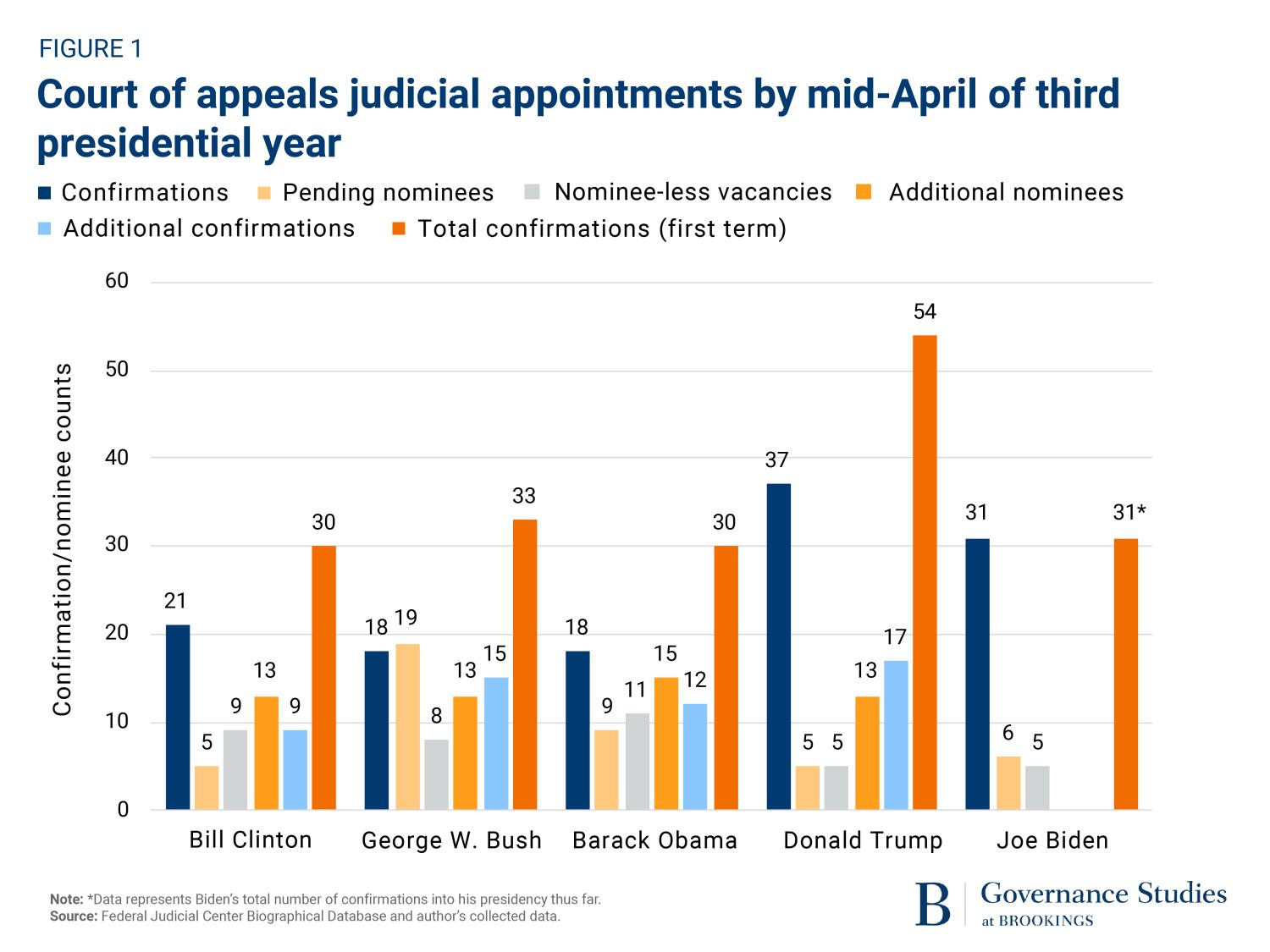
At the recess, Trump’s prospects for 54 total confirmations may have seemed bleak, with only five pending nominees and five more nominee-less vacancies. But eleven more vacancies occurred, and the Senate was able to confirm 17 additional nominees.
Biden also came to the April recess with few pending nominees and nominee-less vacancies, and, to boot, he has six fewer confirmations than Trump. Biden will have 42 confirmations if he gets his six pending nominees confirmed and gets nominees in place and confirmed for the five nominee-less vacancies (not counting the two recent post-recess nominees). Those eleven confirmations are hardly sure things; one nominee has been pending over 460 days and another has provoked within-ranks public opposition.
Forty-two confirmations, even if unlikely, is still 12 short of Trump’s 54 (although way ahead of predecessors). The starting point for 12 more appointments is at least 12 more vacancies. Vacancies occurring between the third-year April recess and the end of the fourth year (not shown on Figure 1) ranged, for Biden’s four immediate predecessors, from seven to 13. For Trump the figure was eleven, nine from retirements, one from death, and one from then-Judge Barrett’s Supreme Court appointment.
It seems unlikely that 12 more vacancies will occur and, if so, Biden can fill them. At the end of January 2023, 16 Democrat-appointed court of appeals judges were eligible to retire, on salary, from active status, but since then, only one has done so (one more becomes eligible this summer, and another Democratic appointee resigned). Key to Biden’s prospects is whether more will retire, perhaps including some of the six who have been eligible for over ten years. (Twenty-four Republican-appointed circuit judges are similarly eligible, but only four have retired since Biden took office, and one was apparently health-related, and another was a Democrat whom George W. Bush appointed in a deal. Other vacancies may occur.)
And a vacancy is not necessarily a filled vacancy. While Trump was able to fill nine of his 11 post-April recess vacancies, for example, Obama, in his first term, could only fill two of his 13.
District Courts
Trump’s district appointment situation at the April recess was the opposite of the circuit nominee picture — the lowest of the five presidents shown, 30 fewer than Biden’s 88.
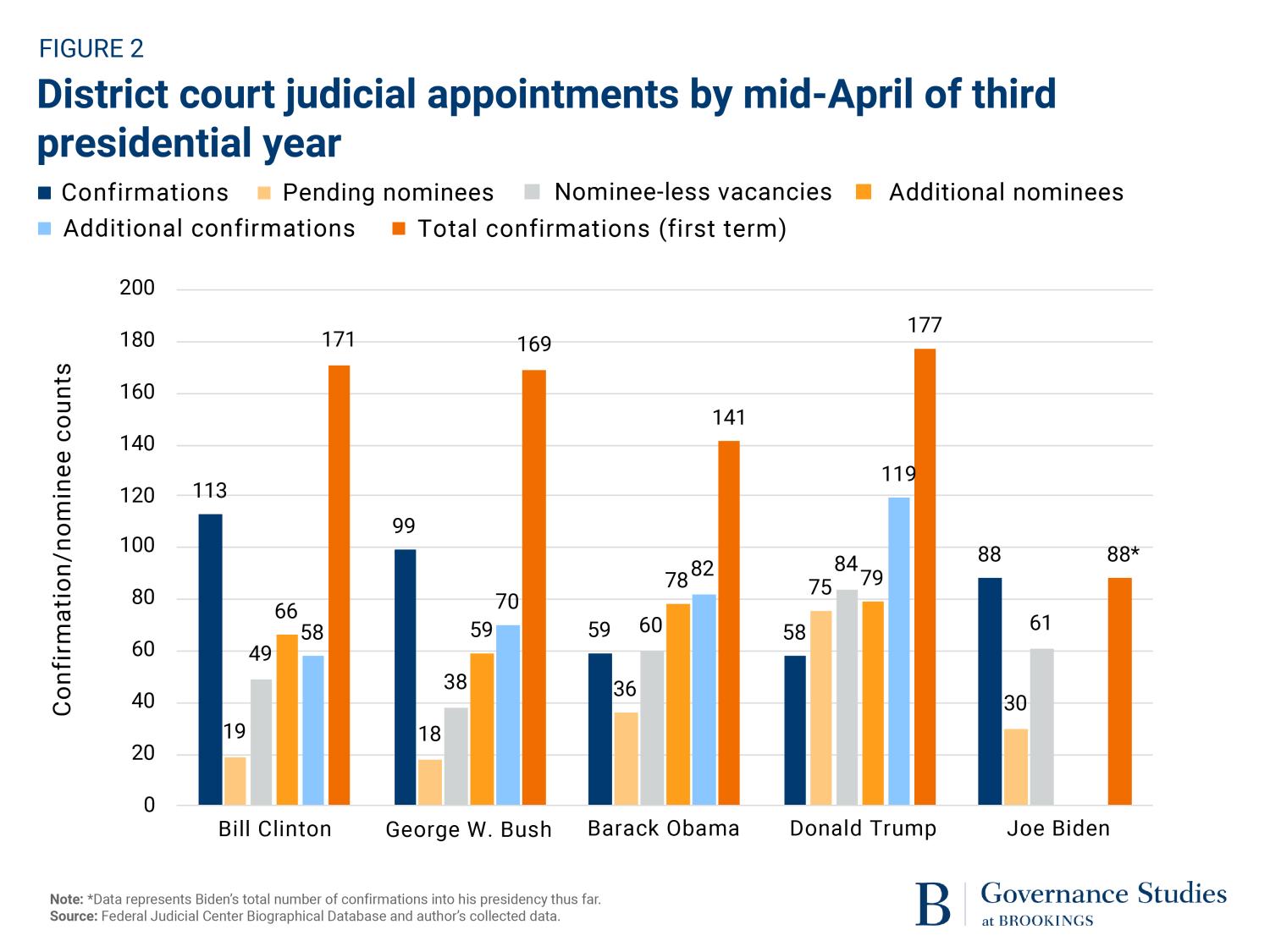
Yet, Trump had more pending nominees and more nominee-less vacancies than any of the others. He and the Senate (with a stronger Republican majority, 53, up from 51 in 2017-18, and having concentrated on appellate appointments in the first two years) seated a record number of district judges.
To Trump’s 75 pending nominees at April recess, Biden has 30. To Trump’s 84 nominee-less vacancies, Biden has 61. Confirming those 91 current or potential nominees would lift Biden’s four-year total to 179, two over Trump’s, but a 100% confirmation rate would be unprecedented.
Moreover, five of his 30 pending district nominees have been waiting from 456 to 577 days, suggesting insufficient Democratic support for successful floor votes, a situation unlikely to change as the 2024 elections approach. And one of Mississippi’s senators has announced her opposition to a recent nominee there, using the so-called “blue-slip” rule that currently gives home-state senators of either party a virtual veto over nominees.
Indeed, of Biden’s 61 nominee-less vacancies, 40 are in states with one or two Republican senators. Of Biden’s 119 district nominees, only 15 (13%) have been in states with a Republican senator — including four each in Pennsylvania and Ohio.
Biden’s avoiding red and purple state vacancies may be because many Republican senators are threatening blue slip vetoes and perhaps because the administration finds it easier to deal with Democratic senators; median days from vacancy to nomination was 399 for the 15 red and purple state nominees, versus 253 for blue state nominees. (Trump’s 132 pre-April recess district nominations included 60 to vacancies in blue states — 45% compared to Biden’s comparable 13%. And Trump’s blue and purple state nominees also took longer — 446 median days to 229 for red state nominations.).
Biden’s pace may be picking up — five of the 15 red and purple state nominees came since November — but any hope of 177 district appointments will be just that unless large numbers of judges in blue states retire or the pace of red and purple state nominations accelerates rapidly. But that requires Democratic leadership’s ending or modifying the blue slip rule — without provoking Republicans to use the parliamentary tools at their disposal to shut the process down completely.
In sum, Senate Democrats hoped that their one-vote working majority, compared to Biden’s first two years, would give an impetus to their impressive first-two-year confirmation record. Vagaries of life and realities of fillable judicial vacancies have challenged those hopes.
-
Acknowledgements and disclosures
Thanks to my colleague Katie Tenpas for helpful comments on an earlier draft.
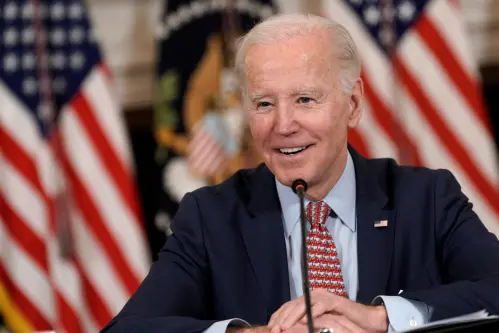
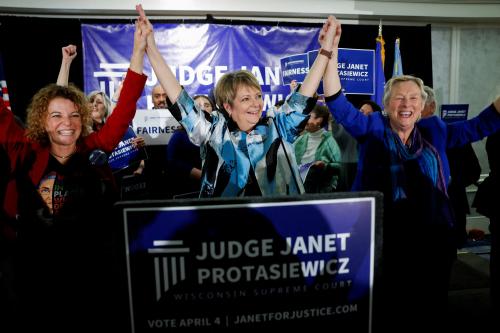
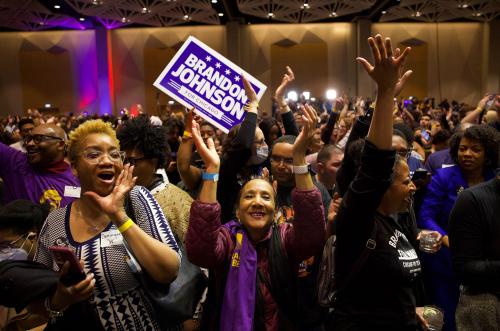




Commentary
The Feinstein absence is not the Democrats’ biggest judges problem
April 20, 2023